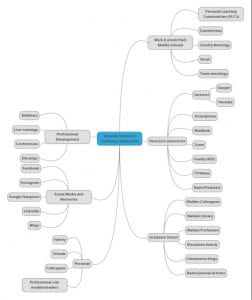Distance learning has a long history and it is quite simply put, not going anywhere anytime soon, if ever (Simonson in Walden University, LLC, n.d.a.). Distance learning has come a long way. Be that as it may, it is an educational model that transcends space and sometimes time. It is also an educational model that has had an impact worldwide (Simonson, Zvacek, & Smaldino, 2019). Distance education is a facet of learning that can and is being used in schools and in corporations, and other sectors as well. There is a growing acceptance of distance education, a growing acceptance of the tools used for distance education, and a growing comfort with distance education (Siemens in Walden University, LLC, n.d.b.). Therefore, I would have to agree with Simonson (in Walden University, LLC, n.d.a.) that distance education is going to continue to dramatically increase, as it already has from 1 million students to 6 million students in five years. I personally feel that distance learning will grow with the private sector and higher education the most. I feel that distance education will increase with K-12 school aged students to a point, but for custodial reasons, I think the traditional classroom model will continue to thrive for this age group.
In five to ten years, distance education will be essential for all professions who seek to continually grow and further their learning. This could be mandatory courses through their employee, which will be offered through distance learning format; or the individuals seeking personal learning and growth through furthering their own education with a higher education institution that offers distance learning courses. Lease and Brown (2009) shared that the internet is far more pervasive in our lives today than any other technology. Siemens (in Walden University, LLC, n.d.b.) shared that new communication tools are continuously improving; as well as the use of multimedia. Together these findings bring to light the secret elixir for distance learning: communication tools, multimedia tools, and the internet.
As an instructional designer in the future, I have the responsibility of helping the public continue to improve societal perceptions of distance learning. Simonson (in Walden University, LLC, n.d.a.) shared that today distance education is widely adopted because it is becoming more and more accepted, respected, and even expected. As an instructional designer, I hope to design content that meets a variety of learner needs, uses Web 2.0 tools that are engaging and motivating to learners, and make use of the latest and greatest communication tools available. Creating courses that are grounded in well-built theories and make use of research-based instructional strategies will ensure an equitable educational experience for all learners (Saba in Walden University, LLC, n.d.c.). When geographical distance is not a factor in learning, learners can find increased motivation to advance their learning. Almrashdah et al (2010) shared that distance learning has the potential to increase learning opportunities to all people regardless of geographical location, age, or learning abilities. Being able to reach a wider variety of learners is one way that instructional designers can positively contribute to distance education.
As this course draws to a close, I have reflected on several aspects of the career of instructional design and what value I will add to the field. First, I will be flexible. Second, I will strive to incorporate culturally diverse content. Third, I will strive to create content that is learner-centered and infused with research-based strategies that proved to be effective in distance education (Saba in Walden University, LLC, n.d.c.). Fourth, I will strive to use proven instructional design models like A.D.D.I.E. to create course content. Fifth, I will strive to be adaptable and create content that is adaptable to the needs of the learner (Simonson, Zvacek, & Smaldino, 2019). Finally, I will seek to be growth-oriented in the field, so that I may continue to bring forth content that incorporates technology and contemporary material that is relevant. With these six tenets, I hope that once I enter the field of instructional design, that I can positively contribute to the world of distance education.
References
Almrashdah, I. A., Sahari, N., Zin, N. A. H. M., & Alsmadi, M. (2010). Distance learners acceptance of learning management system. In 2010 6th International Conference on Advanced Information Management and Service (IMS) (pp. 304-309). IEEE.
Lease, A. J., & Brown, T. A. (2009). Distance learning past, present and future. International Journal of Instructional Media, 36(4), 415.
Simonson, M., Zvacek, S., & Smaldino, S. (2019). Teaching and learning at a distance: Foundations of distance education (7th ed.) Information Age Publishing.
Walden University, LLC. (Producer). (n.d.a.). Distance education: The next generation [Video file]. Retrieved from https://class.waldenu.edu
Walden University, LLC. (Producer). (n.d.b.). The future of distance education [Video file]. Retrieved from https://class.waldenu.edu
Walden University, LLC. (Producer). (n.d.c). Theory and distance learning [Video file]. Retrieved from https://class.waldenu.edu

